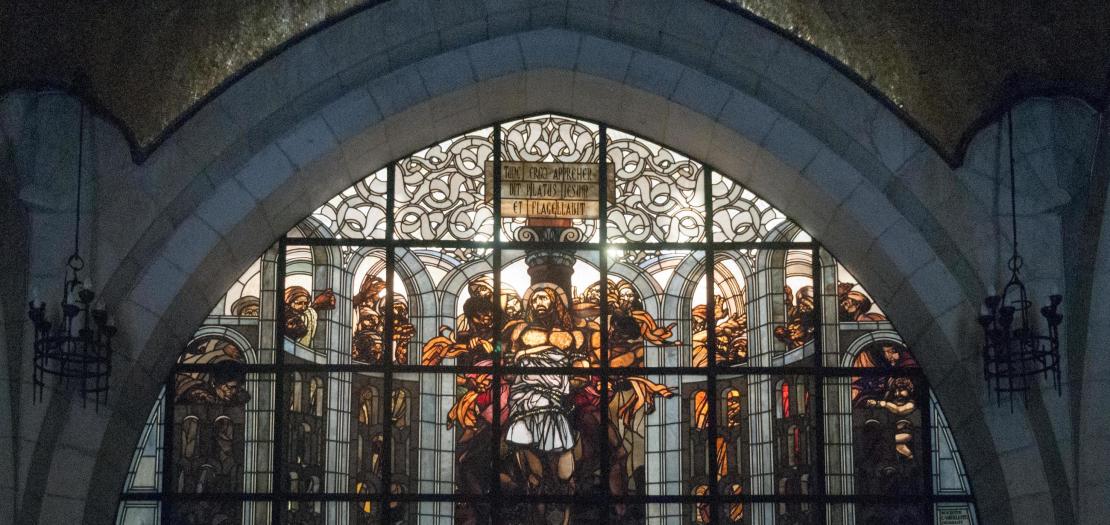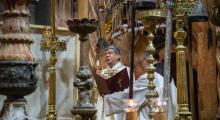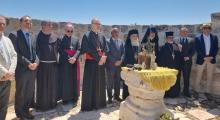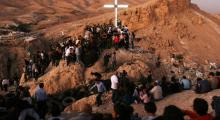Issued by the Catholic Center for Studies and Media - Jordan. Editor-in-chief Fr. Rif'at Bader - موقع أبونا abouna.org

The Franciscan friars of the Custody of the Holy Land celebrated the third Lenten peregrination to the Church of the Flagellation in Jerusalem on 2 April.
Where the Via Dolorosa starts
The church is in the Muslim Quarter of Jerusalem and is the place where, according to tradition, the flagellation of Christ took place, before he was put on the cross and set off on the path of the Via Dolorosa. The complex also includes the Franciscan convent of the Flagellation, the seat of the Studium Biblicum Franciscanum, and the church of the Condemnation and Imposition of the Cross.
The mystery of Christ
“He came down to earth for us men and for our salvation and he became flesh, he became a man, he suffered and he rose on the third day, he ascended to heaven and will come to judge the living and the dead.” The eternal Son of the Father thus became flesh not only in appearance, but really. This is how Fra Ulise Zarza expresses the will of the symbol of Nicaea to emphasize the human nature of Christ, who became a man and, as such, suffered during the flagellation and his death on the cross.
Behold the man
Fra Ulise then continued: Pilate says to the judges: “Behold the man!” (John 19,5) Pilate presented Jesus to the religious chiefs and the crowd with a laconic phrase which smacks of irony: “Behold the man!” By reducing Jesus this way, Pilate perhaps intended to convince his accusers to leave him alone, that the accusation they had made against him no longer deserved any attention and that it was no longer necessary to ask for his death.
In those conditions, Jesus is left only with this title given to him by Pilate: “Behold the man!”, a title which he has in common with the whole of humankind, in particular all those men who are marginalized, defeated, disfigured by pain and suffering; Jesus is “the man of pain who knows suffering well.”
Seeing the face of man in today’s men
He did not remain a stranger to the suffering and pain of men. The figure of such a human and such a humiliated God is upsetting: either it arouses conversion or it causes a scandal.
The face of the “man of pain” that the Gospel presents to us today must lead us to see his face in the faces of “today’s men of pain.” The devotion for the Lord’s passion must have a direct affect in the care of the suffering flesh of our brothers. Nicaea invites us to contemplate the “Behold the man,” the Son of God incarnate reduced in suffering and pain “for us men and for our salvation;” in him who came “to seek what was lost,” we see the eternal and infinite love of God for each one of us.







